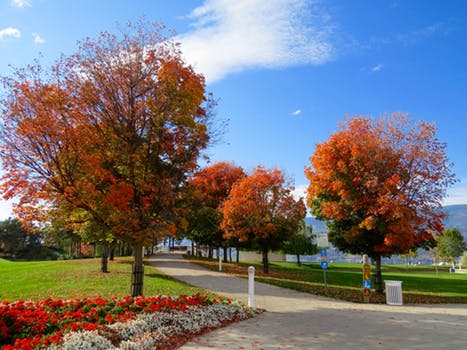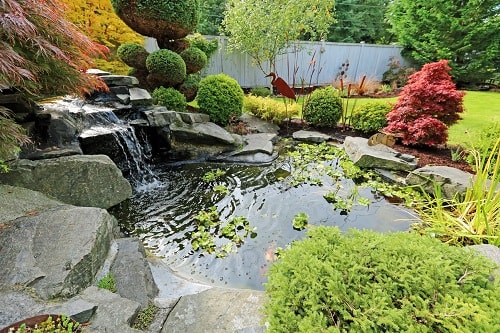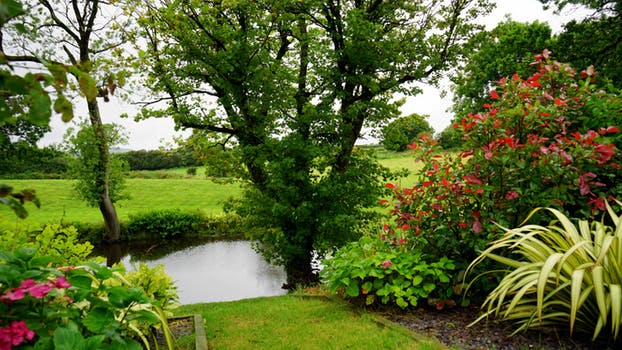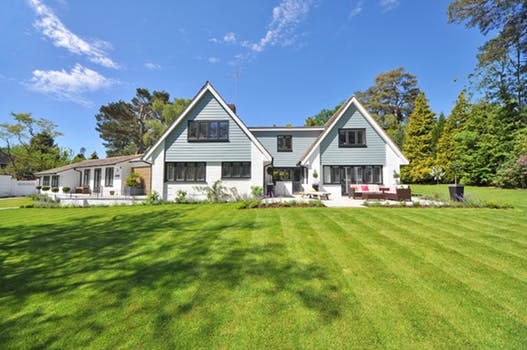Climate change and dwindling resources are being addressed by more home gardeners and commercial landscaping companies. Sustainable landscaping utilizes smaller spaces, uses less water, and focuses on “low maintenance” gardening.
Knowing how to grow a sustainable garden includes understanding which plants to use. Plants that are native to your geographical area take less work, usually require less water, and thrive in the local climate and soil type. Native plants also provide food and shelter for insect and bird populations.
Trees provide a natural barrier between the sun and your house, reducing summer cooling costs by 35%. Trees give a spectacular seasonal show as they flower in springtime, and leaf and bark colours change in the fall.
Some popular Canadian tree species are:

- Red Oak
- Black Oak
- White Oak
- Sugar Maple
- Black Maple
- Silver Maple
- Red Maple
- Hemlock
Rain water features

The look and sound of water offers a relaxing and comforting ambiance. Rain water can be collected and added to water features such as free standing fountains, rock waterfalls, bee “gardens” (made with a large bowl filled with marbles), and ponds.
Water that drains away or ends up in a storm sewer is a waste. Plants limit runoff water and allow it to permeate to the soil. Collect rainwater for your garden by using a 50-gallon drum and a small plastic hose to siphon water for irrigation.
Organic fertilization and water concersation

Making mulch and compost in your backyard adds to a sustainable garden. Mulch prevents weeds from creeping up and is an excellent way to retain soil moisture. You can use shredded bark, pine needles and grass clippings for mulch. Also, combining yard and garden vegetation and leaves with compostable food waste means less material goes in the landfill and more organic material for your soil.
Save space

A lush and gorgeous lawn can use a great deal of water and nutrients. A more sustainable landscape is filled with native plants, trees, low shrubs, or groundcover. You can also group plants with similar watering and fertilizing needs.
A sustainable design considers where plants are placed. Plants that need direct sunlight are placed is open spaces and shade-loving plants are placed in the shadow of tall plants. Water-loving plants can be grown where moisture collects, with trailing plants grown over terraces. Sloping gardens can make use of contour farming practices and drip irrigation.
More and more gardeners are showing interest in urban agriculture. Fruit trees and other edible, flowering plants can be a wonderful addition to your home. Sustainable gardening and landscaping helps our environment, saves on water and energy bills, and has benefits for your home and property value.
To help maintain healthy foliage all year round, contact Great Northern ReGreenery for expert aeration and fertilization services. We’ll be glad to inspect your yard and provide a free consultation. Schedule your appointment with us: 1-877-775-7444.





